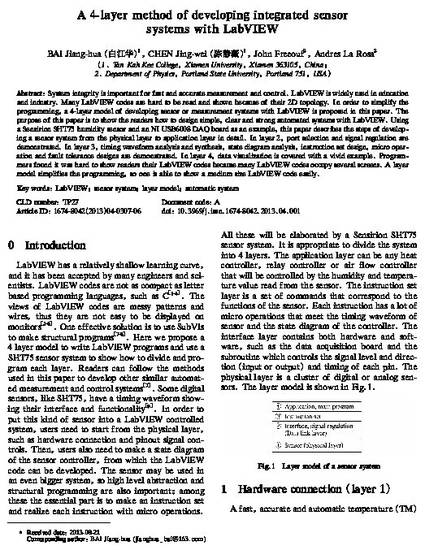
System integrity is important for fast and accurate measurement and control. LabVIEW is widely used in education and industry. Many LabVIEW codes are hard to be read and shown because of their 2D topology. In order to simplify the programming, a 4-layer model of developing sensor or measurement systems with LabVIEW is proposed in this paper. The purpose of this paper is to show the readers how to design simple, clear and strong automated systems with LabVIEW. Using a Sensirion SHT75 humidity sensor and an NI USB6008 DAQ board as an example, this paper describes the steps of developing a sensor system from the physical layer to application layer in detail. In layer 2, port selection and signal regulation are demonstrated. In layer 3, timing waveform analysis and synthesis, state diagram analysis, instruction set design, micro operation and fault tolerance designs are demonstrated. In layer 4, data visualization is covered with a vivid example. Programmers found it was hard to show readers their LabVIEW codes because many LabVIEW codes occupy several screens. A layer model simplifies the programming, so one is able to show a medium size LabVIEW code easily.

This is the publisher's final PDF. Article is available in the Journal of Measurement Science & Instrumentation. Dec2013, Vol. 4 Issue 4, p307-312.